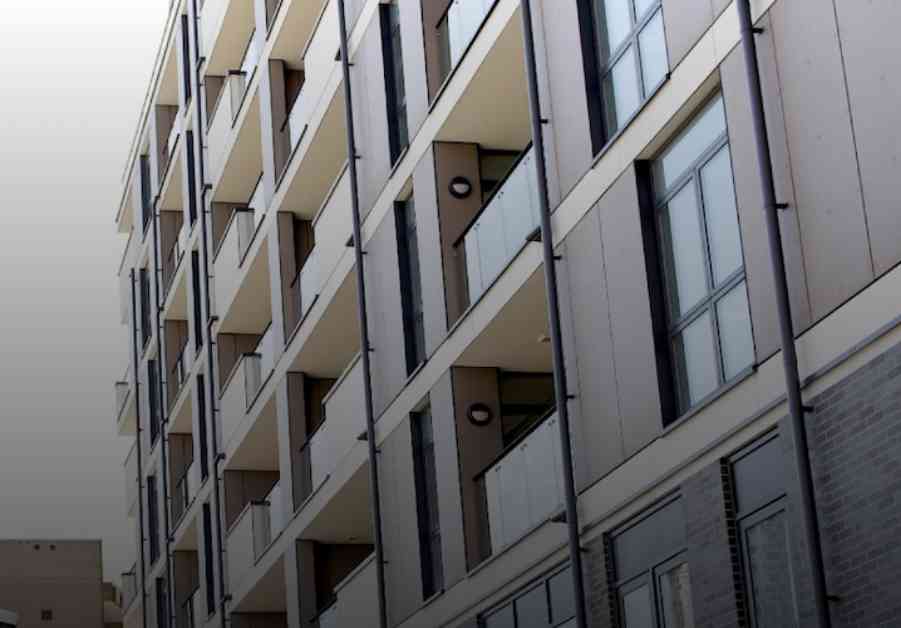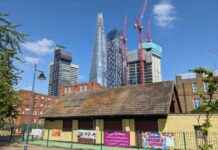London’s Affordable Housing Programs Facing Challenges in Meeting Targets
The latest report from the London Assembly sheds light on the current state of affordable housing programs in London, highlighting both progress and setbacks in meeting the ambitious targets set by the Mayor of London. While there has been an increase in the proportion of social rent dwellings being built, overall housebuilding has faced challenges that have impacted the pace of affordable housing delivery.
City Hall-funded affordable homes started in London last year fell short of expectations compared to the previous year, with a notable decrease in the number of new affordable homes being built. However, there is a silver lining in the fact that a larger percentage of these new homes will be available at the cheapest social rent levels, marking a positive shift towards addressing the city’s affordable housing crisis.
Mayor Sadiq Khan’s government-funded housebuilding initiatives, including the £4.8 billion 2016 to 2023 and the overlapping £4 billion 2021 to 2026 programs, are crucial components of efforts to deliver much-needed new homes in London. These programs aim to contribute to the construction of approximately 140,000 new homes, with a specific focus on affordable housing options for residents in need.
One significant change highlighted in the report is the shift in funding criteria between the two programs. The 2016 funding deal limited the number of social rent homes that would be funded to 39% of the total, whereas the 2021 settlement increased this quota to 60%, underlining a stronger commitment to providing affordable housing options for those in lower income brackets.
The report indicates that Mayor Khan is making progress towards achieving the 60% social rent target, with social rent homes accounting for 88% of new starts in 2023/24. Additionally, the target of 20,000 new council homes by March 2024 was successfully met, marking a significant milestone in council housebuilding efforts in London.
Despite these achievements, the overall delivery of affordable homes has faced challenges over the past year, mirroring the broader slowdown in housebuilding across the city. The total number of new homes built, including both affordable and market-rate properties, dropped by a third from over 21,000 in 2022/23 to 14,270 in the following year, reflecting a significant decline in housing construction.
The decline in affordable housing construction is particularly stark, with only 2,358 homes started under City Hall-funded schemes last year, including just 1,777 under the new 2021 deal. This leaves a considerable gap of approximately 75,000 homes to be completed by 2030, underscoring the challenges facing the affordable housing programs in London.
The economic challenges affecting housebuilding, such as high interest rates, inflation, skills shortages, and regulatory costs, have had a significant impact on the current program’s progress. Additionally, social landlords, including borough councils and housing associations, are facing constraints due to government-imposed caps on social rent levels and borrowing, further complicating efforts to provide affordable housing options.
In response to these challenges, the report notes that targets for the 2021 to 2026 Affordable Homes Programme have been revised down from 35,000 homes to between 23,900 and 27,100, reflecting the need to adjust expectations based on current constraints. The increased proportion of social rent homes being supplied also necessitates more funding per home, adding to the financial pressures faced by affordable housing providers.
Despite these challenges, there have been positive developments in the form of improved relationships between City Hall and Whitehall, leading to extensions in program deadlines and additional funding for intermediate tenures like the London Living Rent scheme. These agreements highlight a collaborative approach to addressing the affordable housing crisis in London and signify a commitment to finding solutions to the ongoing challenges.
Furthermore, the report highlights the importance of affordable housing secured through Section 106 agreements, which require developers to include a certain number of affordable homes within new residential schemes. Mayor Khan’s initiatives to fast-track planning applications for developments offering at least 35% affordable housing have shown promising results, with a significant increase in the number of affordable homes in new build schemes.
However, the report also points out concerns regarding housing associations’ reluctance to take on affordable homes due to financial constraints, posing a potential threat to future achievements in affordable housing delivery. It emphasizes the need for continued collaboration and support for affordable housing providers to ensure the successful implementation of affordable housing programs in London.
In conclusion, while progress has been made in increasing the proportion of social rent dwellings and meeting certain targets in affordable housing construction, challenges remain in achieving the ambitious goals set by the Mayor of London. The report serves as a valuable assessment of the current state of affordable housing programs in London and highlights the need for ongoing efforts to address the city’s affordable housing crisis effectively.





















